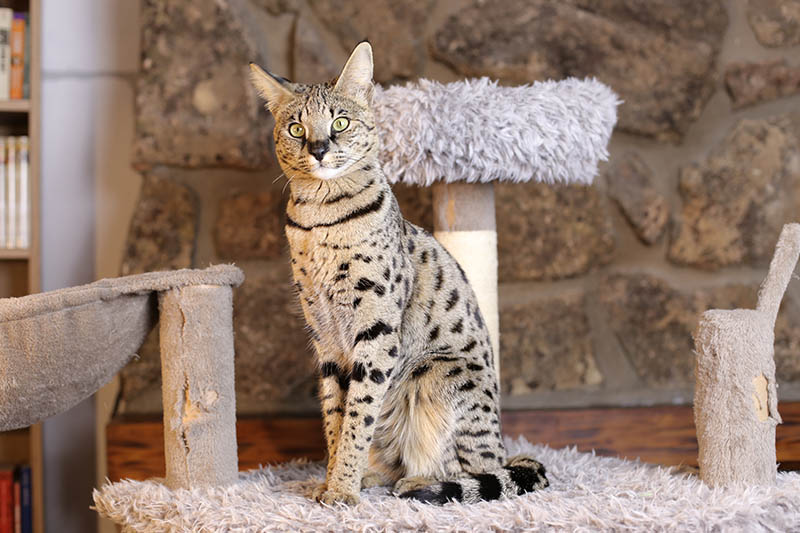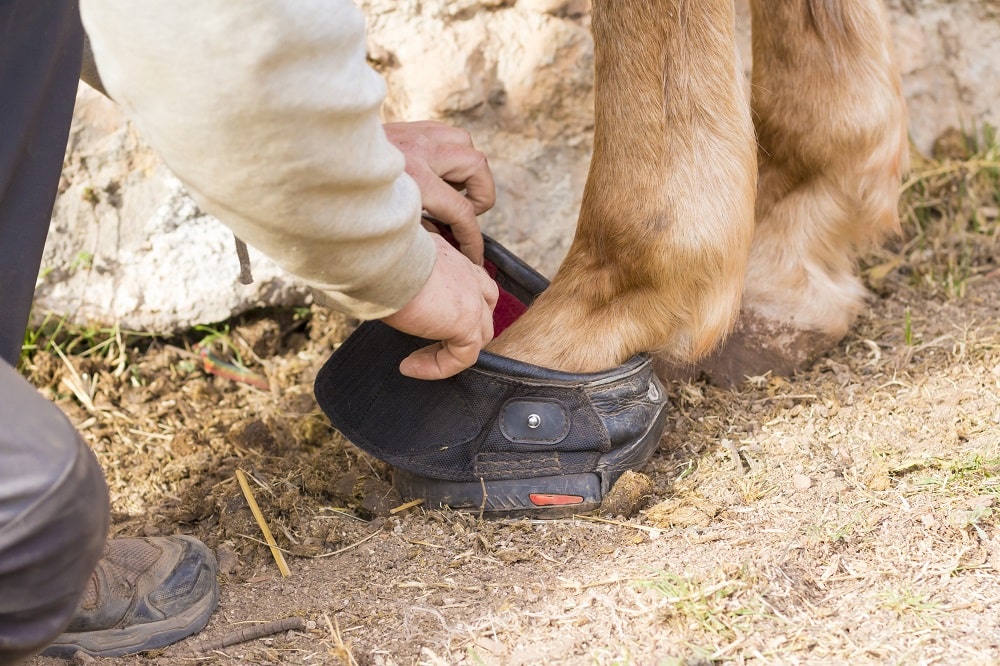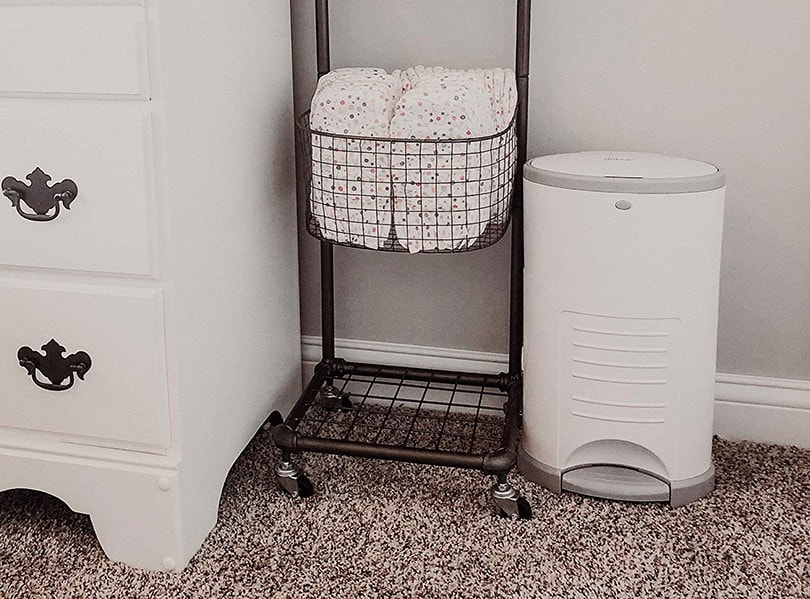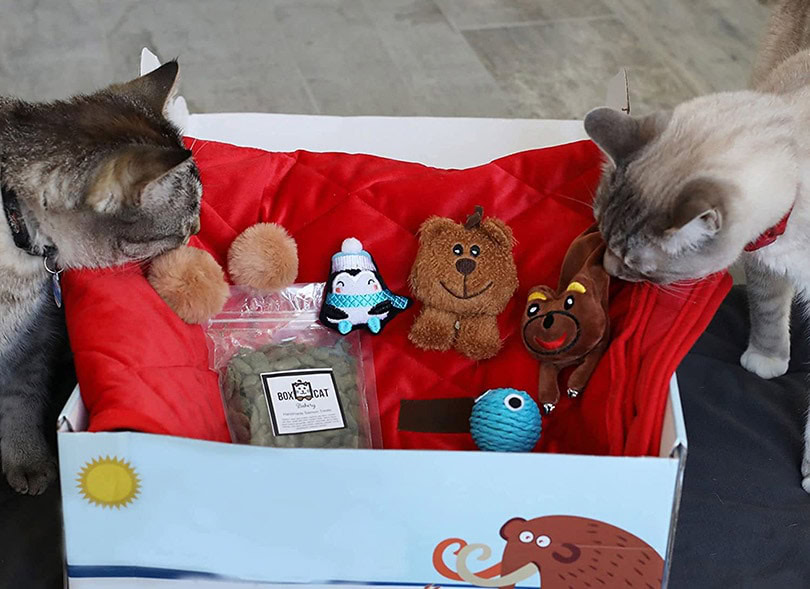VET APPROVED

The information is current and up-to-date in accordance with the latest veterinarian research.
Learn more »Click to Skip Ahead
Almost 70% of American households have pets.1 However, to enjoy their immense benefits, some people must deal with allergies triggered by contact with proteins found in pets’ skin, saliva, or urine. Allergies caused by dogs and cats affect between 10% and 20% of the population.
The Savannah cat is a breed often touted as being hypoallergenic. Unfortunately, no cat breed, including the Savannah, is truly hypoallergenic. Some cats, such as Savannahs, have a short coat without a heavy undercoat and are considered hypoallergenic by some. Unfortunately, they still shed allergens that can negatively affect allergy sufferers. Read on below to find out more.

What Does Hypoallergenic Mean?
The term “hypoallergenic” was coined in 1953 by cosmetic product marketers to imply products that did not cause allergic reactions. Today, the term hypoallergenic, when applied to pets, is used to describe pets that do not trigger allergies.
However, the word “hypoallergenic” is often thrown around when describing certain cat breeds and should not be really trusted. This is because all cats produce allergens to some degree, albeit in differing types and quantities.
How Does a Savannah Cat Cause Allergies?
Fel d 1 is the major allergen responsible for causing allergic reactions in humans, but there are more. The World Health Organization/International Union of Immunological Societies (WHO/IUIS) allergen nomenclature lists cat allergens from Fel d 1 to Fel d 8. Fel d 1 is produced in the salivary and sebaceous glands and can be found mainly on cat fur, skin, dander, and saliva. As the cat grooms itself, it transfers the protein onto the fur. Dander is dead skin or any material shed by animals with fur, hair, or feathers.
Because Fel d 1 is very sticky and airborne, once in the air, the protein will reach the nasal cavity and skin, causing a reaction.
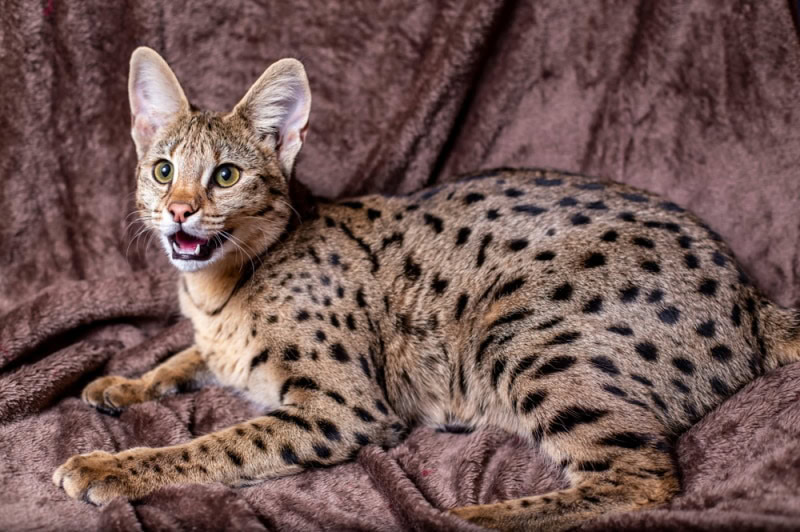
Signs of Savannah Cat Allergies
Common signs of cat allergies are:
- Sneezing
- Wheezing
- Nasal congestion resulting in facial pain
- Red and watery eyes
- Itching eyes
- Chest congestion and shortness of breath
- Skin rashes
How Do You Prevent Allergic Reactions to Cat Dander?
Bathing and grooming your cat regularly can help remove loose fur from its coat. To clean your cat, use pet wipes or a damp towel and a bowl full of water mixed with pet-friendly shampoo. However, if you have serious allergies, you may want to use a professional pet groomer to avoid any reactions.
It’s also important to have certain areas of your home that are off-limits to your cat. This could be your bedroom and provides a space where there will be no allergens left by your feline. Of course, make sure to regularly wash all bedding, blankets, and surfaces that your cat has been in contact with.
A 2019 study investigated the impact of feeding cats a diet containing anti-Fel d 1 immunoglobulin Y (IgY) antibodies derived from chicken eggs. Since Fel d 1 is the primary allergen produced by cats, a reduction of its levels in the cats’ saliva, and therefore their hair, will likely improve allergy symptoms in susceptible people. The study showed an average decrease of 47% by week 10 in cats being fed exclusively this diet. Cats with the highest initial Fel d 1 levels exhibited the most substantial reductions. This suggests that incorporating anti-Fel d 1 IgY antibodies into a cat’s diet can effectively diminish the presence of this allergen on their fur.
Allergy medications are available as pills, sprays, and shots. Each person’s options depend on what their doctors recommend. Antihistamines block histamine, a chemical the immune system releases during an allergic reaction. Nasal sprays can contain antihistamines to relieve patients from nasal congestion.
Does the Savannah Cat Produce Fewer Allergens?
Unfortunately not. A 2024 study reported that certain cat breeds produce lower levels of Fel d 1. These breeds include the Balinese, Javanese, Siberian, Devon Rex, Russian Blue, Cornish Rex, Bengal, Oriental Shorthair, LaPerm, and Sphynx. However, the reduced production of Fel d 1 in these breeds remains a subject of debate. The Savannah cat is considered a low to moderate shedder, but unfortunately, this doesn’t make them hypoallergenic.

Summary
Savanna cats are not hypoallergenic. Like all cats, they produce allergenic proteins, called allergens, that can trigger allergic reactions. However, they tend to shed less than many other breeds, which may be beneficial for individuals seeking a low-shedding cat.
Featured Image Credit: AJR_photo, Shutterstock
